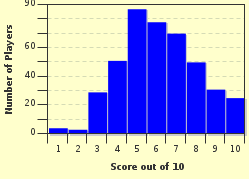Quiz Answer Key and Fun Facts
1. It is undisputed that ancient Greece served as the foundation on which modern Europe is built. The most important surviving building of classical Greece stands in Athens and served as a temple for the goddess of heroic endeavour, Athena. What is the building called?
2. After the Hellenistic period, Rome became the centre of Europe. Legend has it that Rome was founded in 753 BCE. Who was the first King of Rome?
3. The period following the fall of the Roman empire is called the Dark Ages. In the 8th century the Franks created a state that would cover most of Western Europe. Probably the best known Frankish ruler was Charlemagne, who was King of the Franks from 768 till his death in 814. Which of the following statements is true?
4. There is historical evidence that the Vikings were the first Europeans to set foot on Manhattan.
5. Although the southernmost point of Africa is Cape Agulhas, the Cape of Good Hope has always represented the major psychological 'crosspoint' when travelling between East and West. The rounding of the Cape was achieved in 1488. Which country was the first to achieve this milestone?
6. The Dutch East India Company, the Vereenigde Oost-Indische Compagnie (VOC), was the first ever multinational corporation.
7. This French baron and political thinker is famous for his description of the separation of powers, which still forms the basis of our modern political systems. Who is he?
8. In the early 20th century the super powers of Europe signed agreements that ensured themselves economic benefits, peace and military back-up when necessary. Italy, Austria-Hungary and Germany created an alignment as did Great Britain, France and Russia. What was the latter one called?
9. Following its defeat in World War I, the Ottoman Empire - once a mighty empire that stretched from Ethopia to Austria and from Morocco to Persia - ceased to exist after their last sultan, Mehmet VI Vahdettin, was overthrown. It was replaced by the Republic of Turkey. When was this republic founded?
10. In what year did the Berlin Wall fall, symbolically ending the Cold War and reuniting both Germany as well as Eastern and Western Europe?
Source: Author
vishal-nl
This quiz was reviewed by FunTrivia editor
bloomsby before going online.
Any errors found in FunTrivia content are routinely corrected through our feedback system.


